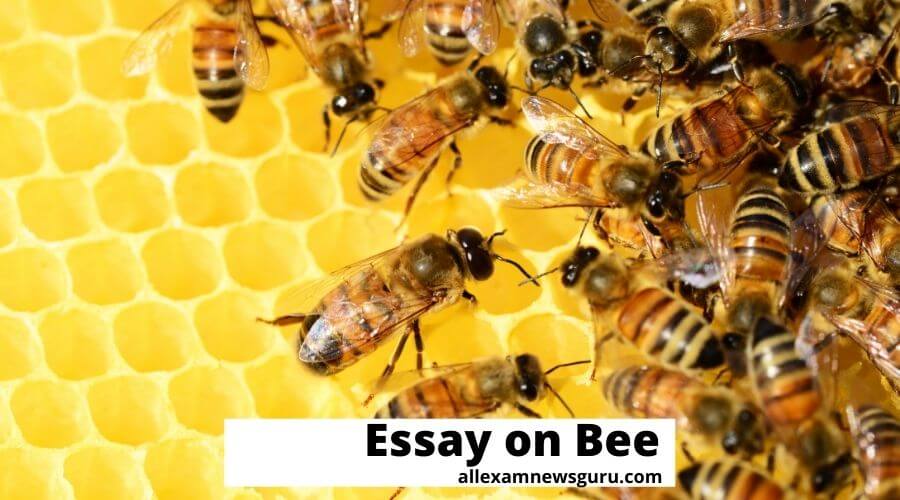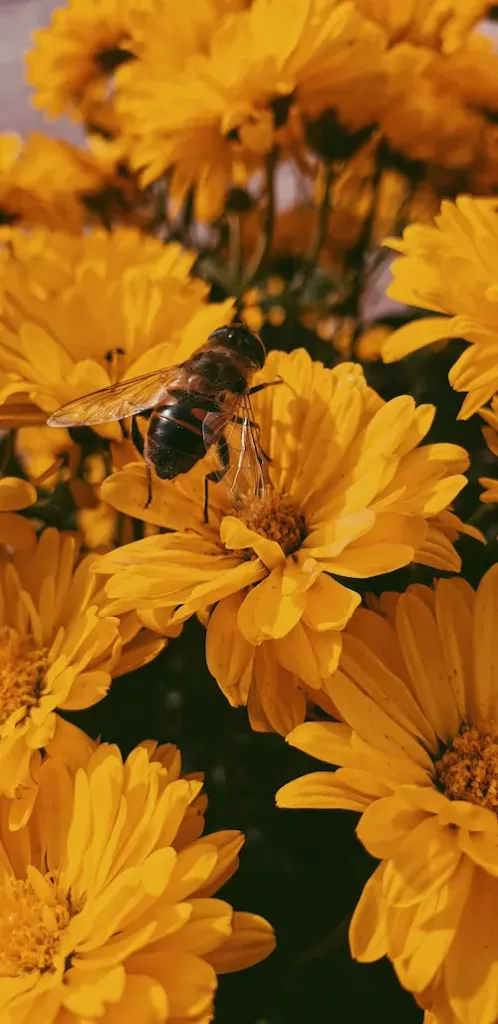If you are looking for an essay on bees, then you are at the right place.
One of the most popular types of Bee is the honeybee. The eastern honeybee has the scientific name Apis cerana and the western honeybee Apis mellifera. They are the only insects that can produce honey.
Let’s dive right into the essay!
10 lines on Bee
- The Bee is a very common insect.
- It is found in flowers and the hive.
- The Bee is a very small insect.
- Its body is divided into three parts: the head, the thorax, and the abdomen. It has three pairs of legs and two pairs of wings.
- They all come from the middle part of the body.
- The Bee has a sharp sting, and its bite is very painful.
- There are three types of bees: male, female, and queen bees.
- The queen is the biggest, and it only lays eggs.
- The male bee is very lazy. But the female Bee is hard-working.
- It collects honey from flowers. We get honey and wax from the beehive. Thus, the Bee is a very useful insect.
Short Essay on Bees
Bees are essential to our ecosystem as they are responsible for pollinating plants and crops that produce food.
They live in colonies and communicate with each other through the waggle dance to share information about food sources. However, bees are facing numerous challenges such as habitat loss and pesticide use, which threaten their populations.
It is important to take measures to protect bees and their habitats, such as planting bee-friendly flowers and avoiding harmful pesticides.
Without bees, many crops would not be able to grow, so it is crucial to ensure their survival for the benefit of our ecosystem and food production.
Essay on Bees for Students
Bees are one of the most remarkable species in the insect kingdom. They are celebrated for their industriousness, their organization, and, most importantly, their role in pollination, which is crucial for the survival of our ecosystems.
Understanding bees and their behaviour can furnish us with insights into nature’s intricate balance and remind us to be conscious stewards of our environment.
Importance of Bees
Bees play an indispensable role in pollination. They transfer pollen from the male parts of a flower to the female parts, thus enabling fertilization and the production of fruits and seeds.
This cross-fertilization helps at least 30% of the world’s crops and 90% of our wild plants to thrive. Without bees to spread seeds, many plants—including food crops—would die off.
Bees and Their Behavior
Bees are social insects that live in colonies, typically in a beehive. Each hive is composed of a queen, a few hundred drones, and thousands of worker bees, each performing specific functions for the survival of the colony.
The Queen Bee is the mother of all the bees in a hive. She lays thousands of eggs each day and secretes a pheromone that maintains unity in the colony.
Drones are male bees, responsible solely for mating with the queen. After mating, they die as their reproductive organs and abdomens are ripped away.
Worker Bees form the bulk of the hive’s population and do all the work except laying eggs. They forage for food, make honey, build the comb, care for the young, and guard the hive.
A bee’s ability to communicate and work together as a single unit for the welfare of the colony is a marvel and an important lesson in cooperation and teamwork. For example, when a bee finds a rich source of nectar, it returns to the hive and performs a unique dance to communicate the location and quality of the food. This allows other bees to quickly locate and access the resource, ensuring the survival of the entire colony. In this way, bees demonstrate the power of effective communication and collaboration. While bees may be small, their impact on the ecosystem is immense. In a similar vein, the seemingly simple cow plays a crucial role in agriculture and food production. A short essay on cow can highlight its contributions to society, from providing milk and meat to cultivating the land through grazing. Both bees and cows exemplify the profound significance of cooperation and teamwork in the natural world.
Challenges to Bees
Unfortunately, bees face many challenges today. The rapid decline in bee populations worldwide—commonly known as Colony Collapse Disorder—can be attributed to various factors.
These include habitat loss, climate change, pesticide exposure, invasive species, and disease. This decline is a worrying trend since it impinges upon food security and biodiversity.
- Essay on Sharks For Students & Children - April 8, 2024
- Essay on Cats for Students (+PDF) - November 4, 2023
- Essay on Carpenter|10 Lines on Carpenter - November 4, 2023


